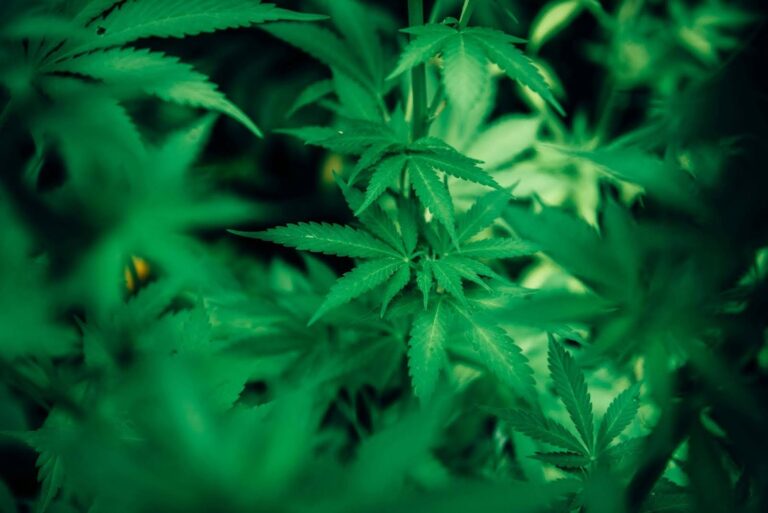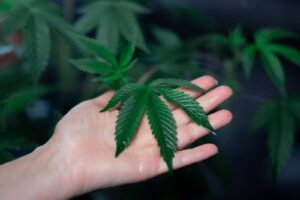Have you ever felt overwhelmed by the complexity of growing cannabis indoors? You’re not alone. Many aspiring growers hesitate to start because they think it’s too complicated or time-consuming. But what if there was a simpler way to cultivate high-quality cannabis right in your own home? Enter autoflowering cannabis strains—the game-changer for both beginners and seasoned growers.
Autoflower cannabis grows quickly and efficiently, making it perfect for small indoor setups. Unlike photoperiod strains, which require specific light schedules to trigger flowering, autoflowers transition from the vegetative stage to flowering automatically. This eliminates the need for strict light cycle management, making them ideal for beginners who want a simple growth process and experienced cultivators looking for a low-maintenance option.
This guide covers everything you need to know about growing autoflower weed indoors. You will learn how to choose the right seeds, set up the perfect environment, manage watering and nutrients, train your plants for better yields, and properly harvest and cure your buds.
Why Choose Autoflower Strains for Indoor Cannabis Growing?
Autoflower strains offer a range of benefits that make them ideal for indoor cultivation. These strains are uniquely suited to controlled environments where factors like lighting, temperature, and humidity can be optimized. Here’s why they stand out:
- No Dependence on Light Cycles: Autoflowers don’t rely on specific light cycles to flower. You can keep your lights consistent and still get great results. Unlike photoperiod strains, which require specific light schedules to trigger flowering, autoflowers transition based on age, making them easier to manage.
- Fast Growth Cycle: Most autoflowers are ready for harvest within 8-12 weeks of seed. It allows growers to have multiple harvests within the year. Such a short period is ideal for growers looking to maximize efficiency and yield within a short time frame.
- Hardy Genetics: Autoflowers resist pests, diseases, and environmental stress. Such resilience reduces the complications of mold or nutrient imbalances.
- Compact Size: These plants are short in stature, making them perfect for small indoor spaces. They allow you to grow discreetly and efficiently without needing large grow tents or excessive vertical space.
- Beginner-Friendly: Autoflowers are forgiving, making them ideal for beginners. Their resilience and simplicity reduce the margin for error, making it easier to achieve a successful harvest even if you’re new to cannabis cultivation.
- Lower Energy Consumption: Autoflowers do not require changes in the light schedule, so they consume less energy overall. This makes them cheaper for indoor growers who want to reduce their electricity bills.
- Growth in Varying Mediums: Autoflowers thrive well in all mediums, from soil to coco coir to hydroponics. This makes it easier for growers to experiment with different setups according to the space and level of experience available.
With minimal maintenance, predictable growth patterns, and no need for complex light adjustments, autoflowers provide a stress-free way to grow high-quality cannabis indoors.
So, how do you choose the right autoflowering cannabis seeds? Let us understand.
How to Grow Autoflower Weed Inside: Step-by-Step Process
Growing autoflower weed indoors is easy and rewarding for both beginners and pros. The plant flowers automatically and requires little maintenance, with a short growth time. Proper nutrients and care will yield maximum yields. Let us explore how to do this step-by-step:
1. Choosing the Right Autoflowering Cannabis Seeds
The first step in learning how to grow autoflower weed inside is selecting the right seeds. Quality matters here—always buy from reputable sources to ensure you get stable, healthy genetics. Poor-quality seeds can result in weak plants, low yields, or even failure to germinate.
When choosing a strain, there are several key considerations:
- Growth Speed: Some strains complete their life cycle in as little as 8 weeks, while others take up to 12 weeks. If you want a quicker harvest, opt for a fast-growing variety.
- Yield Potential: Some strains naturally produce higher yields than others. To maximize production, look for strains known for their abundant buds.
- Resistance to Pests and Mold: Some autoflowering strains are more resistant to environmental stressors like pests, mold, and changes in humidity. If you live in a harsh climate, select a strong strain.
- Flavor and Aroma: Each strain has its unique terpene profile that affects taste and smell. Whether you prefer fruity, earthy, citrusy, or skunky notes, there’s an autoflowering strain to suit your preferences.
- Size and Structure: Some autoflowers grow taller, while others remain short and bushy. Consider your available growth space and select a strain that fits your setup.
- THC-to-CBD Ratio: Some strains have balanced THC and CBD levels, while others lean heavily towards one. Understanding this ratio can help match a strain to your medical or recreational needs.
- Adaptability to Different Environments: Certain autoflowers thrive in humid environments, while others prefer drier conditions, so choosing the right strain for your setup is key. PlanaCan helps streamline the process by letting you automate tasks with customizable templates. From planting to harvest, you can schedule each step in a visual calendar with just a few clicks. Pairing the right strain with an efficient workflow keeps your grow organized and maximizes yields with less effort.
Research and select a strain that aligns with your growing conditions and personal goals. A well-chosen strain sets the foundation for successful and rewarding indoor growth.
Now, let us discuss how to set up ideal indoor growing conditions for your cannabis. Here’s how to do it.
2. Setting Up Ideal Indoor Cannabis Growing Conditions
Creating the perfect environment is crucial for healthy plant growth. Even the best genetics can struggle to reach their full potential without the right conditions. Factors such as lighting, temperature, humidity, airflow, and nutrients play a crucial role in plant health and yield. By carefully managing these elements, you can create an optimal indoor growing space that promotes vigorous growth, strong root development, and abundant bud production. Let’s break it down in detail:
1. Light Requirements
Autoflowers thrive under consistent lighting. An 18/6 light schedule (18 hours on, 6 hours off) is popular, but you can also use a 20/4 schedule for maximum growth. LED grow lights are highly recommended for their energy efficiency and full-spectrum output.
High-intensity discharge (HID) lights are also an option, but they generate more heat and require better ventilation. Fluorescent lights like T5 can be used for seedlings but may not provide sufficient intensity for mature plants.
2. Soil and Growing Medium
The right soil is key to a healthy plant. Choose light, well-aerated soil with good drainage. A mix of peat moss, perlite, and compost works well. Worm castings and mycorrhizal fungi can enhance root health and improve nutrient uptake.
Coco coir provides excellent aeration and water retention if you prefer a soilless medium. Hydroponic systems offer faster growth but require careful nutrient monitoring.
3. Temperature and Humidity
Autoflowers thrive in temperatures between 68-77°F during the day and slightly cooler at night. Consistency is crucial, so avoid extreme temperature fluctuations. Humidity levels should start around 60% during the seedling stage, then gradually decrease to 50% in the vegetative stage and 40% during flowering to prevent mold and bud rot. Using a hygrometer can help you track and maintain ideal conditions.
4. Ventilation and Airflow
Good air circulation helps strengthen plant stems, prevent mold, and reduce heat buildup. Use an oscillating fan to keep air moving within your growing space. A carbon filter with an exhaust fan helps control odor and remove stale air. Proper ventilation also ensures a steady supply of CO2, which is vital for photosynthesis.
5. Nutrient Management
Autoflowers require less nutrients compared to photoperiod plants. Use a balanced nutrient mix that contains nitrogen (N), phosphorus (P), and potassium (K). Start with a low dose and gradually increase according to the plant‘s response.
Avoid overfeeding because autoflowers are sensitive to nutrient burn. Switch to a bloom-specific formula with higher phosphorus and potassium during flowering to promote bud development. Organic nutrients can enhance flavor and overall plant health.
6. Pot Size and Transplanting
Autoflowers have a short life cycle, so it’s best to plant them directly into their final pots to avoid transplant shock. A 2-3 gallon pot is ideal for most strains, but larger plants may benefit from 5-gallon pots. Fabric pots improve root aeration and drainage, promoting healthier growth.
Optimizing indoor growing conditions takes effort, but once dialed in, auto flowers thrive with minimal intervention. PlanaCan streamlines workflow automates tasks, and maximizes yields. It tracks cultivation decisions and their impact, helping you refine methods, avoid mistakes, and boost profitability. Whether you’re managing a small setup or a larger operation, PlanaCan keeps your growth organized for consistent, high-quality harvests.
Next up, let us understand how to master water and pH levels that are ideal for the growth of your cannabis plant.
3. Mastering Watering and pH Levels For Cannabis
Watering seems simple, but it’s where many growers trip up. Overwatering is a common mistake that can lead to root rot, mold, and stunted growth. To avoid this, follow these guidelines:
- Watering Frequency: Allow the top inch of soil to dry out between waterings. Water when the pot feels significantly lighter is a good rule of thumb. Watering deeply but less frequently encourages strong root development and helps prevent root rot.
- Drainage: Using fabric pots can improve drainage and prevent excess water from accumulating around the roots, reducing the risk of root rot. Adding perlite or sand to the soil mix can further enhance drainage.
- Watering Method: Consider bottom watering, where the pot sits in a water tray and absorbs moisture from the bottom. This technique promotes deeper root growth and prevents over-saturation of the topsoil.
- Water Temperature: Use room temperature water to avoid shocking the roots. Cold water can slow growth, while hot water can damage roots.
- Water Quality: If tap water is used, let it stand for 24 hours to evaporate chlorine. Otherwise, filtered or dechlorinated water prevents harmful chemicals from affecting plant health.
Choosing the Right Water
The type of water you use matters to your cannabis plants a lot. The right water source ensures your plants remain healthy and receive the best possible nutrients without harmful contaminants. You can choose the right type of water from these:
- Tap Water:
Tap water is the most accessible option for many growers, but it may contain chlorine, fluoride, and other chemicals that negatively affect plant health. To minimize potential harm, let tap water sit for 24 hours before using it to allow chlorine to dissipate. If your tap water has high levels of dissolved solids or heavy metals, consider using a water filter or testing the water quality before use.
- Filtered or Distilled Water:
Filtered water removes many harmful chemicals found in tap water, making it a safer alternative. Distilled water, while free of impurities, also lacks essential minerals, so you may need to supplement with calcium and magnesium to support plant growth.
- Rainwater:
A natural, chlorine-free, and additive-free alternative. Rainwater is soft and slightly acidic, so it is suitable for plants. However, collection and storage must be done in a proper manner to avoid contamination with bacteria or pollutants from the atmosphere.
- RO water:
RO water is probably the purest water on the market. For growers who want absolute control over the nutrients given to their crops, RO water is excellent because it does not contain minerals.
- Spring or Well Water:
Natural spring or well water might be a good choice if you have it because it often contains beneficial minerals for plants. However, before applying the water to your plants, be sure to test it for contaminants, too many minerals, or excessive concentrations of unwanted compounds.
Pro Tip: Regardless of your chosen water source, ensure it is stored in a clean container and kept at room temperature before watering your plants. Using cold water directly from the tap can shock the roots, slowing growth, while excessively warm water can encourage bacterial growth.
Managing pH Levels
pH levels are just as important as watering frequency in ensuring healthy cannabis growth. An improper pH level can lock out nutrients, causing deficiencies that stunt growth and reduce yields. Here is more about pH that you should know:
- Ideal pH for Soil: 6.0-6.5 is ideal for the roots to absorb nutrients efficiently. This pH range will help the beneficial microbes in the soil break down the nutrients and make them available to the roots.
- Ideal pH for Hydroponics: For maximum absorption, maintain a pH of 5.5-6.0. Hydroponic systems require a slightly more acidic environment to facilitate nutrient solubility and absorption through the root system.
- Testing and Adjustment: Regularly test pH levels using a pH meter or pH test strips. Adjust levels with pH up or down solutions as necessary to maintain the proper range. Consistently monitoring pH prevents nutrient issues over time. PlanaCan eliminates the guesswork by tracking each harvest, linking decisions to results, and refining your methods for bigger yields and profits.
- Effects of pH Imbalances: If the pH drifts too high or too low, plants can become stressed, become yellow, have their tips curled, or show slow growth. At extreme pH levels, some nutrients, such as iron, calcium, and phosphorus, become unavailable to the plants.
- Buffering and Stability: Adding natural pH buffer, like dolomite lime for soil or added silica for the hydroponic solution, stabilizes against sharp changes over a longer period, decreasing manual manipulations.
- Organic pH Regulation: Organics can include compost teas and worm castings. Compost teas help buffer soil pH with natural regulators and are good sources of beneficial microorganisms and nutrient elements.
So, how do you train your cannabis plant for better yields? Let us discuss.
4. Training and Pruning for Better Cannabis Yields
Want better yields? Training and pruning improve plant structure, light penetration, and airflow—boosting growth while reducing mold risks. Here are some of the techniques to help you get started:
1. Low-Stress Training (LST)
Gently bend and tie down branches to create an even canopy, ensuring more light reaches lower bud sites. Perfect for autoflowers since it minimizes stress.
- Start early (2-3 weeks old) when stems are flexible.
- Use soft ties to secure branches horizontally.
- Adjust as the plant grows to maintain even light distribution.
2. High-Stress Techniques (Use Cautiously for Autoflowers)
- Topping: Cut the main tip to promote multiple colas. Only for strong, healthy plants early in growth.
- Super Cropping: Lightly crush and bend branches to strengthen stems and boost production. Requires careful execution to avoid stunting.
3. Defoliation & Pruning
- Remove lower leaves and weak branches to focus energy on top buds.
- Avoid excessive pruning—autoflowers recover slowly.
- Monitor for stress signs like drooping before continuing.
4. Screen of Green (ScrOG)
Use a screen to guide branches and distribute light evenly. Works well with gentle application in autoflowers.
Key Takeaway: Apply stress in moderation, allow time to recover, and track your grow for better yields.
Now, let us discuss when to harvest your cannabis and the further steps that follow.
5. Cannabis Harvesting and Post-Harvest Process
Knowing when to harvest is key to getting the best potency, flavor, and overall quality from your autoflower cannabis plants. Let us understand more about cannabis harvesting in detail below:
When to Harvest
Check trichomes with a magnifying glass to determine the best harvest time. Milky white trichomes indicate peak potency with balanced effects, while amber trichomes produce a more sedative high. If they’re clear, the plant isn’t ready yet. Also, look at the pistils—harvest when 70-90% have darkened and curled in.
Harvesting Tips
Use sterilized scissors to cut branches cleanly and prevent contamination. Remove large fan leaves to improve airflow. Choose between wet trimming (immediate leaf removal for faster drying) or dry trimming (after drying to preserve terpenes).
Drying Process
Hang buds upside down in a dark, ventilated space at 60-70°F and 50% humidity. Avoid direct fans to prevent overdrying. The process takes 7-10 days—buds are ready when small stems snap instead of bend.
Curing for Best Flavor & Potency
Store dried buds in airtight glass jars, filling them 75% full. Burp jars daily for the first week to release moisture, then reduce to every few days. A 2-4 week cure improves flavor, smoothness, and potency.
Storing Your Harvest
Keep buds in airtight containers in a cool, dark place to maintain quality. Avoid plastic bags to protect trichomes. Properly stored cannabis stays fresh for a year or more.
Now, let us understand how to manage common harvesting challenges that occur while growing autoflower cannabis indoors.
Managing Common Cannabis Harvesting Challenges
Even with such hardy autoflower strains, you might run into some trouble. Knowing about common problems and how to treat them will help you grow healthy plants and have a bountiful harvest. Here are some of the ways you could manage your indoor autoflower cannabis:
1. Nutrient Deficiencies and Toxicities:
Yellowing leaves can signal a nitrogen deficiency, while burnt leaf tips may indicate nutrient burn. Other signs of deficiencies include purple stems (magnesium deficiency), brown spots on leaves (calcium deficiency), and curling leaf tips (potassium deficiency).
Use a balanced nutrient mix appropriate for each growth stage and adjust your feeding schedule based on the plant’s response. Flushing the soil with pH-balanced water can help correct nutrient imbalances.
2. Pests and Diseases:
Keep your grow space clean and monitor it regularly for pests like spider mites, aphids, and fungus gnats. These pests can damage leaves, stunt growth, and reduce yields. To control infestations, use neem oil or insecticidal soap or introduce natural predators like ladybugs.
Mold and mildew can also affect your plants, particularly in high-humidity environments. To prevent fungal growth, ensure good airflow and maintain proper humidity levels. Also, regularly inspect your plants for signs of disease, such as powdery mildew or bud rot, and remove any affected areas immediately.
3. Environmental Stress:
Autoflowers thrive in stable environments. Avoid drastic changes in temperature or humidity, as these fluctuations can stress your plants and slow their growth. Maintain a consistent temperature between 68-77°F and adjust humidity levels based on the plant’s growth stage.
Seedlings prefer higher humidity (60-70%) while flowering plants thrive in lower humidity (40-50%) to prevent mold. Additionally, ensure proper light placement—too much light can cause heat stress and light burn, while too little light can result in weak, leggy growth. Use oscillating fans to improve air circulation and prevent hot spots in your grow area.
4. Root Health Issues:
Overwatering or poor drainage can lead to root rot, a common problem that stunts plant growth and reduces yields. Ensure your pots have adequate drainage holes and use well-aerated soil. Allow the top inch of soil to dry out between waterings, and consider using fabric pots to promote better airflow around the roots.
5. pH Imbalances:
Maintaining the correct pH level is crucial for nutrient uptake. An incorrect pH can lead to nutrient lockout, where plants cannot absorb essential nutrients even if they are present in the soil.
Conclusion
Growing autoflower cannabis indoors is a straightforward and rewarding experience. With their resilient genetics and simple care requirements, autoflowers are perfect for both beginners and seasoned growers. By following the right practices—from seed selection to harvest—you can enjoy a bountiful yield right from the comfort of your home.
To take your cultivation to the next level, PlanaCan can streamline your workflow and maximize yields. PlanaCan helps automate your growth process with customizable templates that cover every stage, from planting to harvest. Its visual calendar allows you to schedule and track each task, ensuring no step is missed. Whether you’re planning long-term strategies or managing daily tasks, PlanaCan keeps everything organized in one place.
Integrating PlanaCan into your routine reduces manual effort, monitors growth, and optimizes plant health for the best possible results. Whether you’re running a small personal setup or a larger operation, PlanaCan provides the structure needed to achieve consistent, high-quality harvests.
Schedule a free call today and see how PlanaCan can help you grow smarter and maximize your yields!




